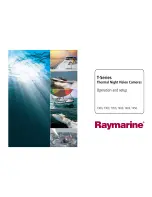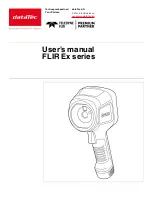
As already mentioned, when viewing an object, the camera receives radiation not only
from the object itself. It also collects radiation from the surroundings reflected via the ob-
ject surface. Both these radiation contributions become attenuated to some extent by the
atmosphere in the measurement path. To this comes a third radiation contribution from
the atmosphere itself.
This description of the measurement situation, as illustrated in the figure below, is so far
a fairly true description of the real conditions. What has been neglected could for in-
stance be sun light scattering in the atmosphere or stray radiation from intense radiation
sources outside the field of view. Such disturbances are difficult to quantify, however, in
most cases they are fortunately small enough to be neglected. In case they are not negli-
gible, the measurement configuration is likely to be such that the risk for disturbance is
obvious, at least to a trained operator. It is then his responsibility to modify the measure-
ment situation to avoid the disturbance e.g. by changing the viewing direction, shielding
off intense radiation sources etc.
Accepting the description above, we can use the figure below to derive a formula for the
calculation of the object temperature from the calibrated camera output.
Figure 20.1
A schematic representation of the general thermographic measurement situation.1: Sur-
roundings; 2: Object; 3: Atmosphere; 4: Camera
Assume that the received radiation power W from a blackbody source of temperature
T
source
on short distance generates a camera output signal U
source
that is proportional to
the power input (power linear camera). We can then write (Equation 1):
or, with simplified notation:
where C is a constant.
Should the source be a graybody with emittance ε, the received radiation would conse-
quently be εW
source
.
We are now ready to write the three collected radiation power terms:
1.
Emission from the object
= ετW
obj
, where ε is the emittance of the object and τ is the
transmittance of the atmosphere. The object temperature is T
obj
.
#T810207; r. AA/43061/43086; en-US
87
Содержание X6520sc Series
Страница 1: ...User s manual FLIR X6520sc series ...
Страница 2: ......
Страница 3: ...User s manual FLIR X6520sc series T810207 r AA 43061 43086 en US iii ...
Страница 4: ......
Страница 8: ......
Страница 64: ...Mechanical drawings 10 See next page T810207 r AA 43061 43086 en US 56 ...
Страница 111: ......




































